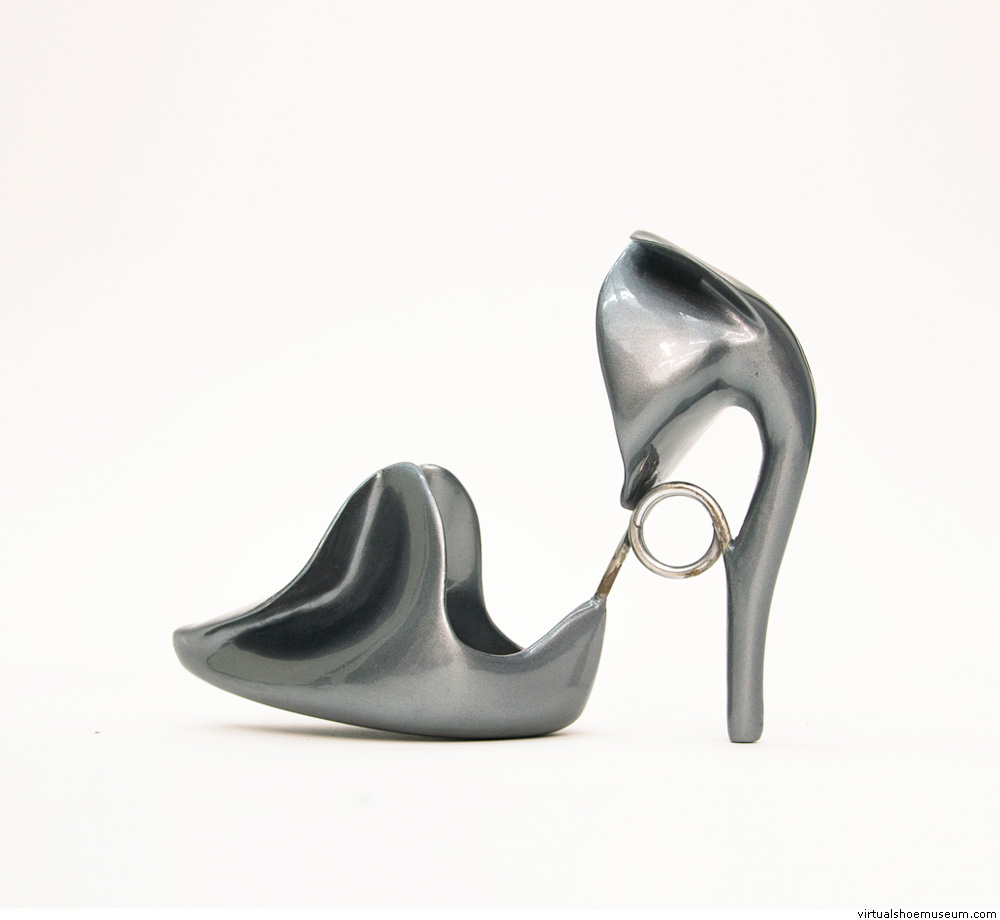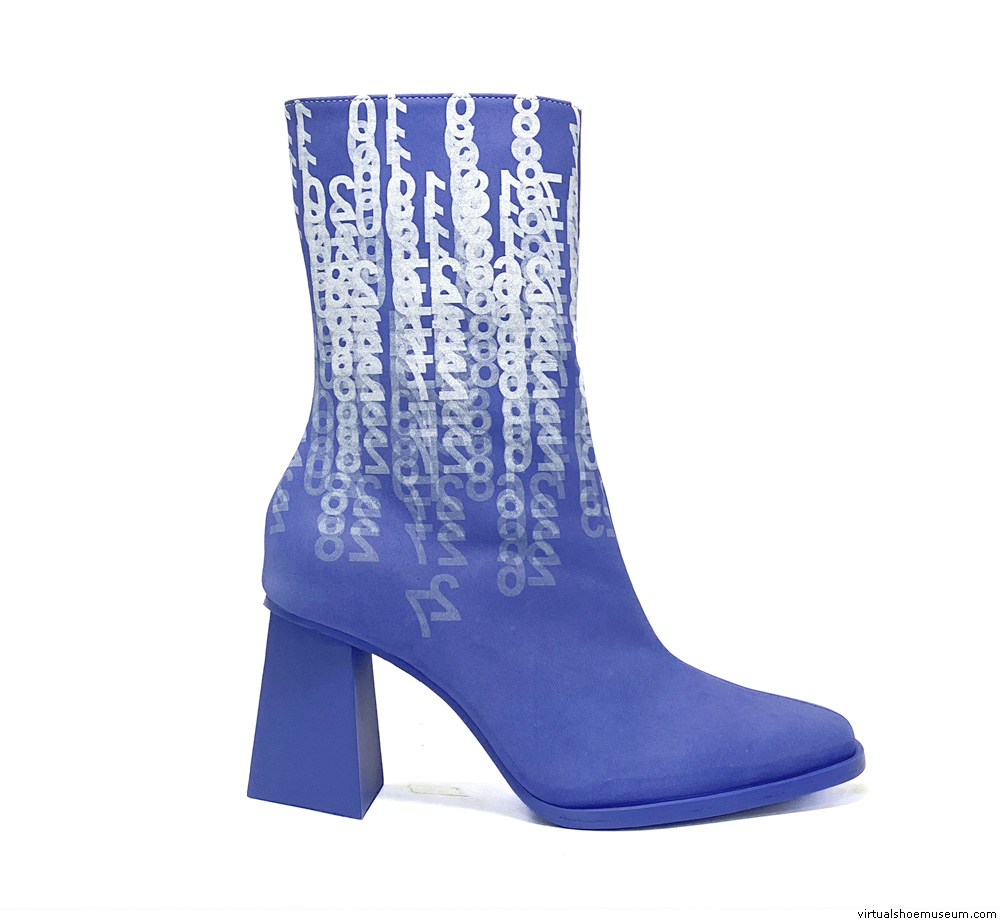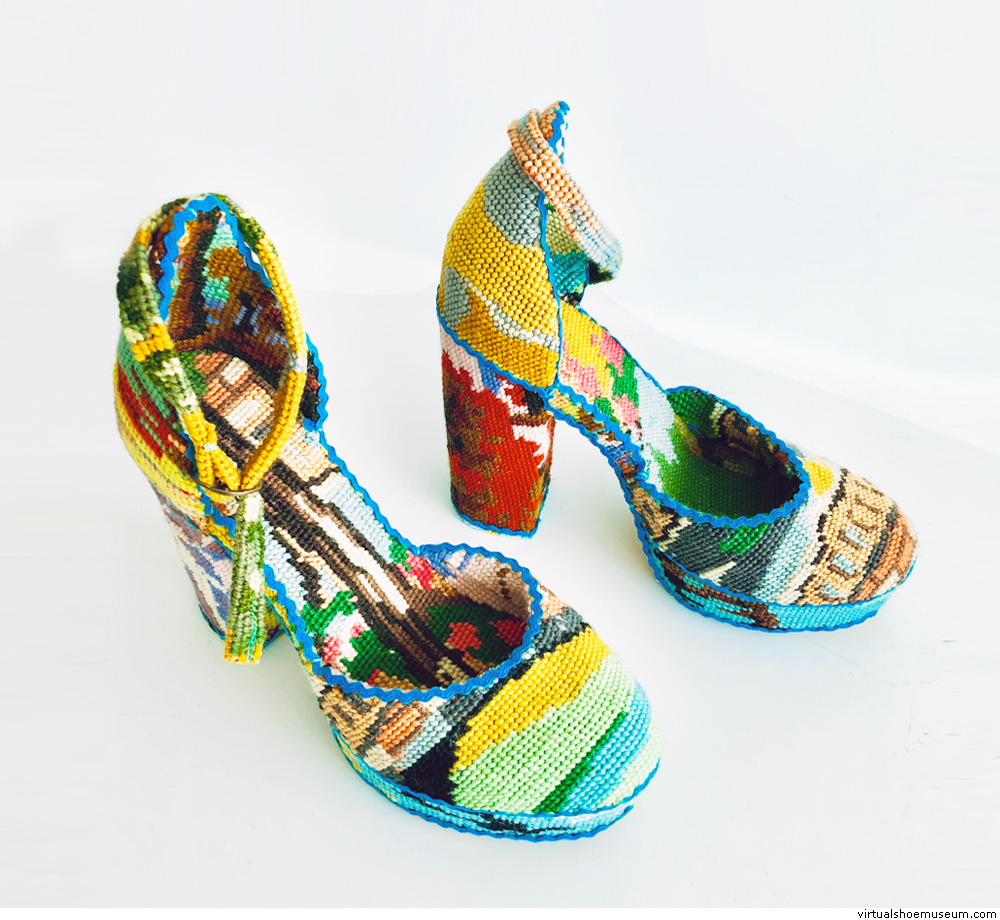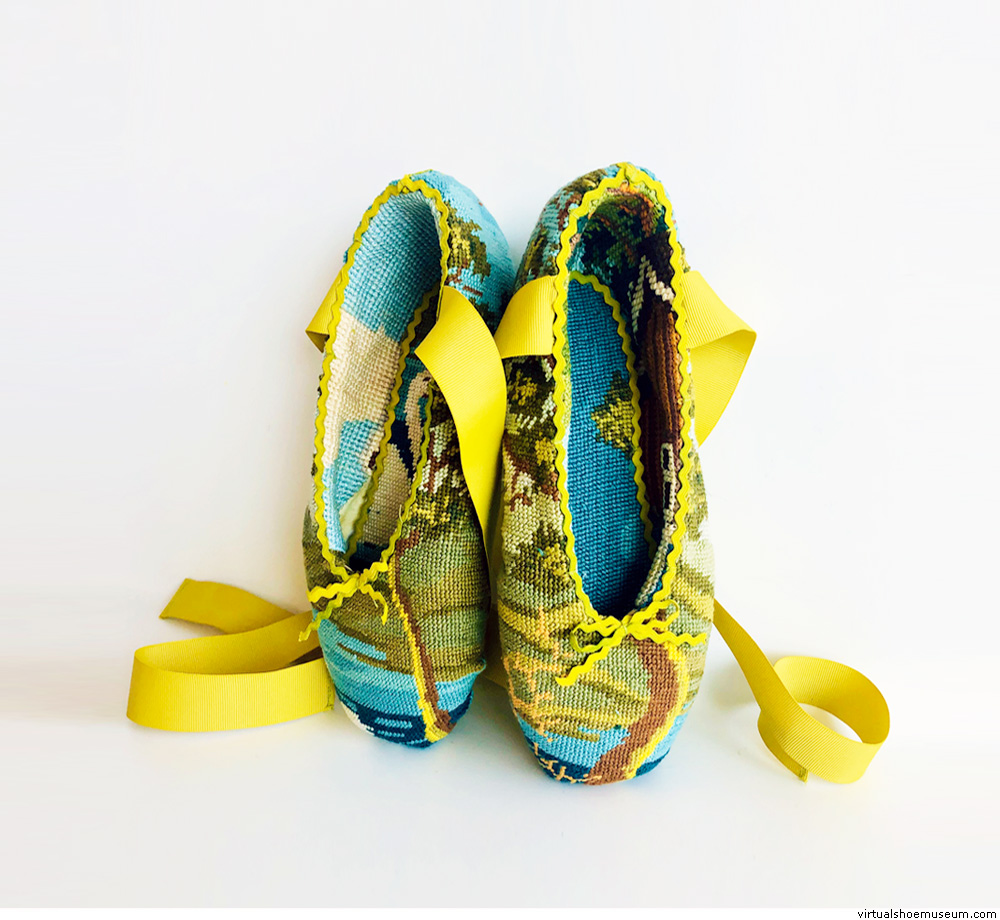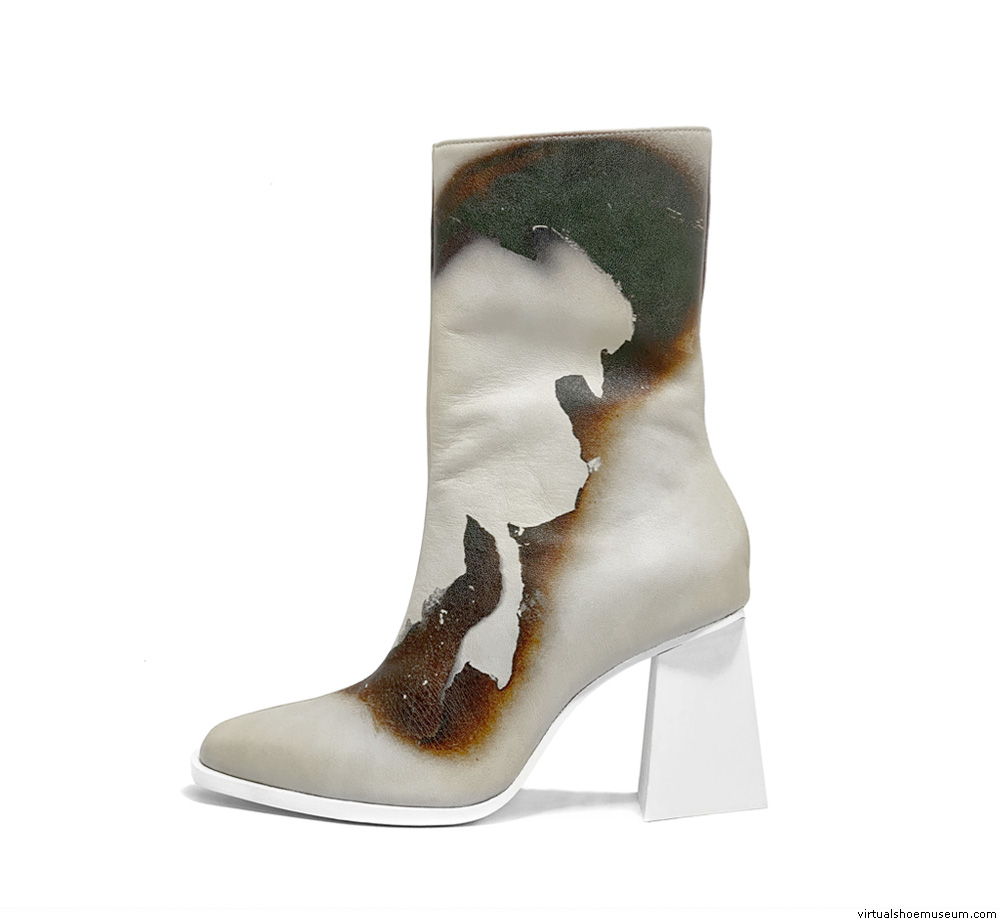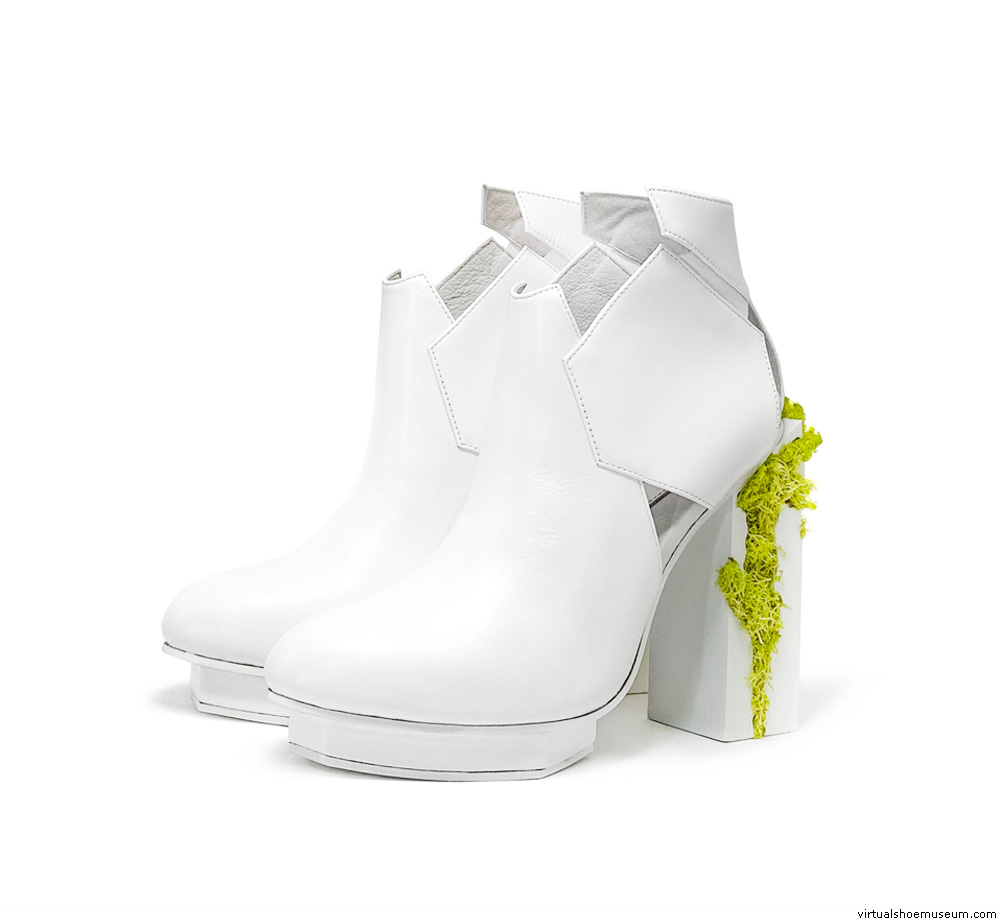Schiaparelli’s Shoe Hat
Intrigued by the wonderful Shoe hat by Elsa Schiaparelli we have asked Sabina Stent to give her vision on this design. Sabina is a writer with a PhD on Women Surrealists and a specialist on Elsa Schiaparelli’s surreal fashion. Italian fashion designer Schiaparelli (1890-1973) is regarded one of the most prominent figures in fashion in the 1920s through 50s, along with Coco Chanel, her greatest rival. Her designs were strongly influenced by Surrealist artists like Salvador Dalí and Alberto Giacometti.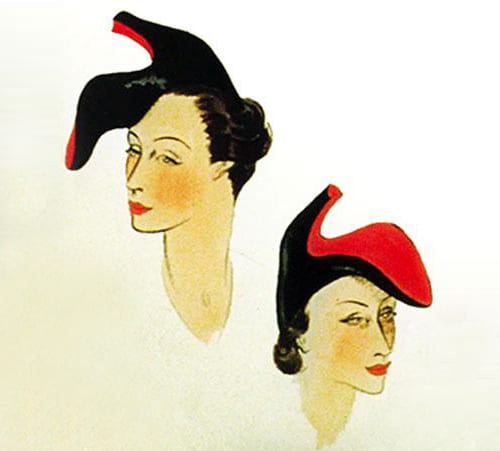
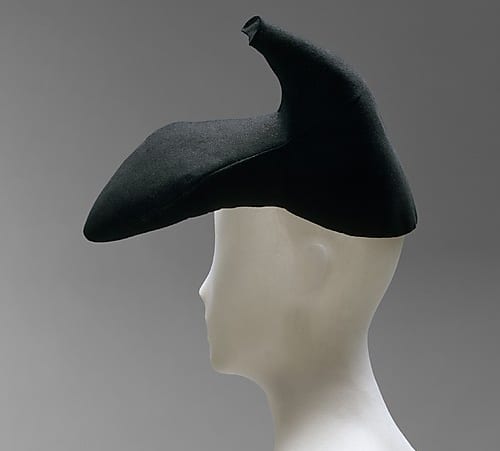
Through her collaborators with Salvador Dalí Elsa Schiaparelli brought Surrealist art to life and, in the words of Dilys Blum, took ‘fashion out of the closet and turned it into ‘dressing with attitude,’(1) transforming her female followers into walking sculptures.


The erotic appeal of shoes has always existed in society, most notably how a high heel corresponds to a sexually dominate female. This was a partnership of mutual respect; Dalí once described how Schiaparelli’s dresses ‘create a type of feminine beauty corresponding to man’s erotic imagination’, (2) while Wood has commented how the duo’s collaborations were to ‘radically alter the way in which fashion and Surrealism were perceived,’ (3) as ‘through Schiaparelli and Dalí’s work, the body was refashioned by Surrealism, and Surrealism was in turn subsumed into the cultural mainstream.(4) Using pre-existing themes surrounding female sexuality and erotica, Schiaparelli’s Surreal fashion literally and figuratively turned mainstream convention upside down. Her use of clothing to display sexuality was a carefully crafted process exploring female fetishism, with outfits designed to be obviously sexual without exposing excess flesh.
In Shoe Hat (winter 1937-1938) we are able to see how Schiaparelli has reversed the feminine ideal; the head has become the object of erotic desire while the shoe’s heel represents the female lost phallus and a manifestation of Freud’s unconscious theory. Most intriguing is how the hat remains feminine despite the phallic high heel. Commenting on the outfit, Evans and Thornton note how ‘the edges of the pockets are appliquéd to look like lips, and worn with two brooches on the lapels in the form of lips in profile’(5) therefore allowing Freud’s previously castrated female “playful” possession of a male phallus obtained through the fashion accessory. However, what is most interesting is that while clothes function to hide the phallus, this hat is displayed prominently upon the female body; it takes pride of place upon her head and does not want to be disguised. The female proudly accepts her symbolic genitalia and thrives in the power it possesses.
The outfit is a contradiction balancing male and female gender associations; the simple design of the suit, dark, high-necked and covering the body reaffirms and hints at what is underneath the garment. The lip embellishment on the pockets represents the female genatalia as a ready vessel for the phallic heigh-heeled Shoe Hat to penetrate. By merging both genders Schiaparelli’s design offers a contrasting depiction of sexuality and how the female body is able to possess both male and female attributes. In addition, Shoe Hat alludes to oral sex, evoking disgust or even grotesque associations surrounding the female mouth as a giver of sexual desire. The result is that any sexual urge originally evoked is now repressed. This is because the mouth, as a moist orifice, has similar characteristics to the anus; both signify sallic organs that require a phallus for sexual penetration. As Freud once described, ‘the use of the mouth of a sexual organ is regarded as a perversion if the lips (or tongue) of one person are brought into contact with the genitals of another, but not if the mucous membranes of the lips of both of them come together.’ (6)
What is evident throughout Schiaparelli’s designs, as with all female Surrealists, is how these works were constantly imbued with associations of the feminine and female fetish, allowing the viewer to see how they accentuate the playfulness of the female body. Although her pieces were created with the intention to cover the body and prevent unnecessary exposure, they are still able to highlight certain areas of the anatomy through carefully placed detail and accessories, either accentuating the pubic area or reclaiming the missing male phallus. However, this has been achieved through the gaining of clothing as opposed to losing it, preventing associations of pornography and further vilification of the female form. Furthermore, as these designs have been created by a female artist for the female body, they act as a celebration instead of inciting issues of pornography and misogyny. This makes for an intriguing question: if these were the products and designs of male Surrealists, would they have differed in their approach and acceptance?
The work of female Surrealists, in acknowledging traditional male themes, produced whimsical pieces that gently mocked patriarchal issues and served to balance any misogynous associations within the movement. Their work was not sexist and remained true to themes of the bizarre and even the erotic. Although influenced by traditional male Surrealism, the female artists did not replicate, instead choosing to enhance original concepts. Although not transporting the movement into the production of subdued and mainstream pieces, they served to extend the boundaries of Surrealism and widen its appeal to a larger audience.
We remember Schiaparelli as both a pioneer of female Surrealism and of fashion, of transforming male sexual domination into female empowerment. Using tools and conventions at her disposal she created a brand of Surrealism that was functional and feminine, playful and provocative, while displaying new means of flaunting femininity and female empowerment. She created a female Sexuality, and a method of female Surrealism in every sense.
1 Dilys E. Blum, Shocking! The Art and Fashion of Elsa Schiaparelli, Philadelphia Museum of Art, 2003), p. 254.
2 Ghislaine Wood, The Surreal Body: Fashion & Fetish (London: V&A Publications, 2007), p. 103.
3/4 Ibid, p. 64.
5 Caroline Evans and Minna Thornton, ‘Fashion, Representation, Femininity’, Feminist Review, 38 (Summer, 1991), pp.4866 (p. 53).
6 Sigmund Freud. On Sexuality (Harmondsworth: Penguin Books Ltd, 1977), pp.6364.
This Shoe hat (and pictures) is part of the collection by The Metropolitan Museum of Art.
The original version of this article Fetishizing the Feminine: the Surreal Fashion of Elsa Schiaparelli was published at Edinburgh University Press in September 2011.
Recommended books on this subject by the Virtual Shoe Museum:
Books Fashion & Surrealism by Francois Baudot, ISBN 9782843233784
Fashion & Surrealism by Richard Martin, ISBN 9780847810734
Vreemde Dingen. Surrealisme en Design by Ghislaine Woods and Thimo te Duits, ISBN 9789069182223
Schiaparelli & Prada: Impossible Conversations (Metropolitan Museum of Art) by Andrew Bolton and Harold Koda, ISBN 9780300179552
Read more by Sabina Stent.

